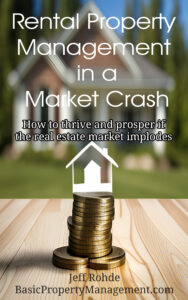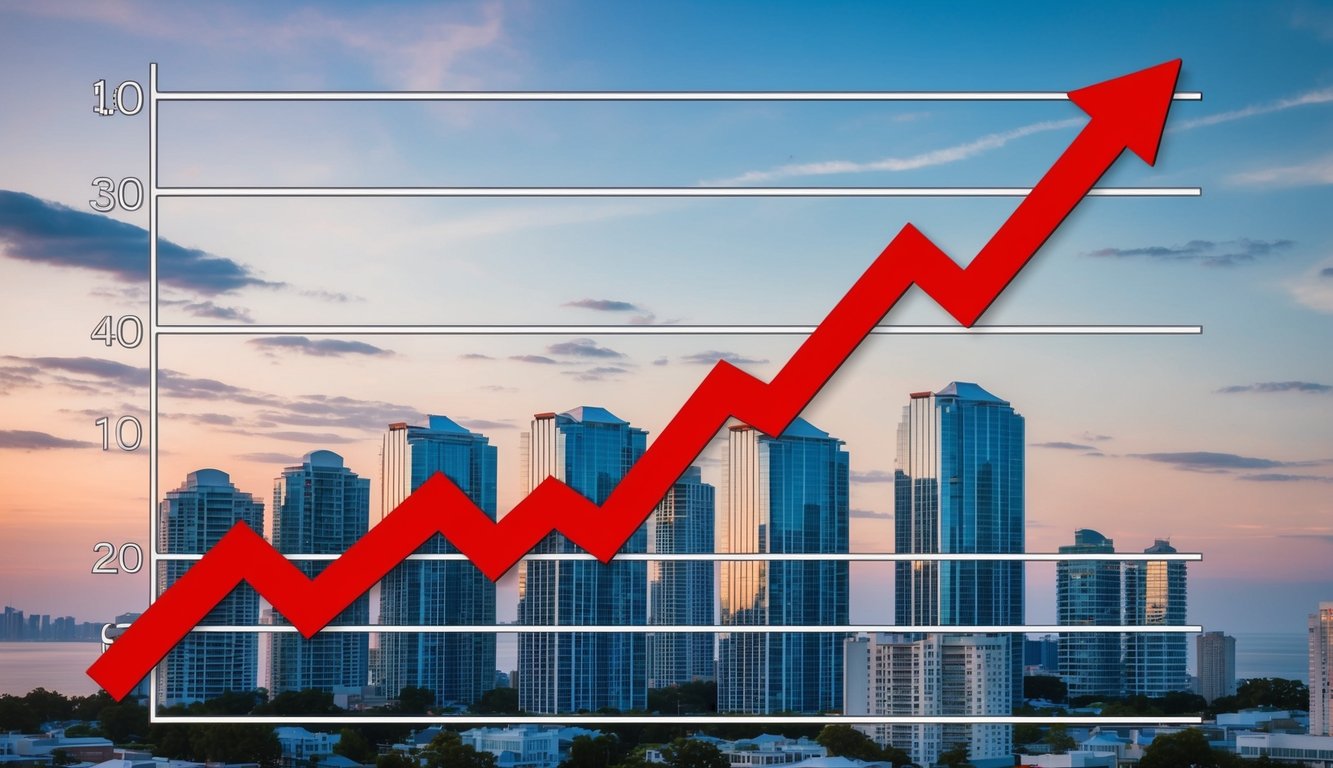Recent tariff policies are reshaping the economic landscape, with significant implications for real estate investors. Rising construction costs and market uncertainties are creating new challenges and opportunities in property markets across the country.
The combination of tariffs and economic pressures has led to falling mortgage rates, yet housing costs remain elevated due to increased material and construction expenses. This dynamic creates a complex environment for investors seeking to navigate the real estate market effectively.
Real estate markets are showing varied responses to these economic shifts, with some regions experiencing more significant impacts than others. Your investment strategy may need adjustment to account for these changing market conditions and protect your portfolio value.
Key Takeaways
- Tariffs are driving construction costs higher while mortgage rates decline
- Regional markets show varying levels of vulnerability to economic pressures
- Strategic property investment approaches can help protect against market uncertainties
How Trump’s Tariff Policies Could Reshape The Economy
The proposed tariffs represent a significant shift in U.S. trade policy, with projected price increases of nearly 2% affecting consumer goods across multiple sectors.
Your purchasing power could face substantial pressure as construction costs rise, particularly in industries dependent on steel and aluminum imports. These increased material costs will likely transfer to end consumers.
The economic impact varies by region. Manufacturing-heavy states in the Midwest and Southeast may experience more pronounced effects on their local economies due to their reliance on industrial materials.
The risk of recession grows as these trade policies ripple through the economy. Market analysts project the combined tariff increases would effectively create the most substantial tax burden on American consumers since the late 1960s.
Key Economic Effects:
- Increased consumer prices
- Higher manufacturing costs
- Reduced international trade
- Slower economic growth
The implementation timeline suggests these changes would take full effect by mid-2025, giving businesses limited time to adjust their supply chains and pricing strategies.
Economic stagnation may follow as companies absorb or pass along these increased costs. Your business decisions and investment strategies might need adjustment to account for this new economic landscape.
The Inflation-Recession Connection For Property Values

When tariffs drive up construction costs, you’ll see the effects ripple through the property market. Rising material costs and economic uncertainty directly impact property values.
The Federal Reserve typically responds to inflationary pressures by adjusting interest rates. During periods of economic slowdown, you might benefit from lower mortgage rates as the Fed attempts to stimulate the economy.
Your property’s value could decrease if economic growth weakens due to tariff-induced inflation. This creates a complex situation where construction costs rise while buyer demand potentially falls.
Key Price Factors to Watch:
- Construction material costs
- Interest rate changes
- Local market demand
- Employment rates
- Consumer spending power
Rising tariffs can create a dual effect on your property investment. Construction costs increase, pushing new home prices higher, while existing home values may face downward pressure from reduced buyer activity and economic uncertainty.
The housing market tends to move more slowly than other economic indicators. Your property values might take several months to reflect the full impact of tariff-related inflation and any subsequent recession.
Regional Real Estate Markets At Highest Risk

Your location plays a crucial role in how tariffs and a potential recession could impact housing prices. The Midwest and Southeast regions face heightened vulnerability due to their manufacturing-heavy economies.
Industrial and commercial properties in manufacturing hubs like Detroit, Cleveland, and Charlotte face the greatest risk. These areas rely heavily on industries directly affected by trade policies and economic downturns.
Multifamily housing complexes in urban areas show mixed signals. While demand typically remains stable during economic uncertainty, rising interest rates have reduced property values in major metropolitan areas.
You’ll find some bright spots in designated opportunity zones, particularly in emerging tech hubs like Nashville and Austin. These areas benefit from ongoing development incentives and diversified economies.
Coastal markets demonstrate more resilience due to limited housing supply and stronger job markets. Your investment in these regions may provide better protection against economic headwinds.
Watch for vulnerability in areas with high construction activity. New building costs could increase due to tariffs, making current developments less profitable and potentially flooding markets with unfinished projects.
Defensive Real Estate Investment Strategies
Property investments in recession-prone markets require strategic positioning. You can protect your portfolio by investing in defensive sectors like healthcare facilities and essential retail spaces.
During periods of economic uncertainty, focus on properties with stable tenants and long-term leases. Multi-family units and warehousing facilities typically maintain steady cash flow even when markets decline.
Rising interest rates and market volatility create opportunities for patient investors. You should maintain higher cash reserves to capitalize on distressed property sales.
Consider these defensive tactics:
- Purchase properties below market value
- Focus on cash-flowing assets over speculative appreciation
- Maintain 6-12 months of operating expenses in reserve
- Diversify across different property types and locations
Tax policy changes and regulatory shifts can impact real estate performance. Structure your investments through REITs or real estate funds to spread risk and maintain liquidity.
Your financing strategy becomes crucial in uncertain markets. Fixed-rate mortgages protect against interest rate fluctuations, while maintaining lower leverage ratios provides additional safety margin.
Choose properties with value-add potential through minor improvements. This gives you control over property performance regardless of market conditions.
Long-Term Outlook For Investors Beyond The Cycle

Supply shortages will intensify across high-demand property segments through 2025. You should focus on assets with strong fundamentals and stable tenant bases to weather market fluctuations.
Multifamily and industrial properties have historically demonstrated resilience during economic downturns. These sectors benefit from consistent demand drivers and shorter lease terms that allow for faster rent adjustments.
Your acquisition strategy should emphasize properties in supply-constrained markets with high barriers to entry. Look for assets below replacement cost with value-add potential through operational improvements.
The U.S. housing market growth will remain subdued at around 3% through 2025. This creates opportunities to acquire distressed residential assets at attractive valuations.
Key Focus Areas for Long-Term Success:
- Build cash reserves for opportunistic purchases
- Maintain conservative leverage ratios
- Invest in property improvements to command premium rents
- Diversify across property types and locations
Early-mover advantages may peak in 2025, making it crucial to prepare now for future acquisition opportunities. Consider forming strategic partnerships to expand your investment capacity.
Remember to conduct thorough due diligence on tenant creditworthiness and market fundamentals before any acquisition. Strong asset management capabilities will be essential for maximizing returns in challenging market conditions.
Frequently Asked Questions

Tariffs and recessions create complex ripple effects throughout real estate markets, impacting everything from construction costs to investment returns and financing options.
How might increased tariffs influence the investment real estate market?
Higher material costs directly affect new construction budgets and renovation expenses for investment properties.
Rising costs can squeeze profit margins on fix-and-flip projects and new development ventures.
Your investment property operating expenses may increase as suppliers pass along tariff-related cost increases to end users.
What are the effects of a recession on commercial real estate values and sales?
Commercial property values often decline during recessions as business activity slows and demand decreases.
Reduced consumer spending power during economic downturns can lead to business closures and increased commercial vacancy rates.
Transaction volumes typically decrease as buyers become more cautious and lenders tighten requirements.
Can tariffs lead to higher mortgage rates for investors?
Economic uncertainty from trade tensions can influence Federal Reserve policy decisions on interest rates.
Lending costs may rise if financial markets react negatively to trade disputes and tariff implementations.
How is commercial real estate affected during times of economic downturn and tariff increases?
Retail and office sectors face particular challenges as business operations contract and consumer spending declines.
Construction costs increase when tariffs affect building materials, potentially delaying or canceling planned developments.
Lease negotiations become more challenging as tenants seek concessions during difficult economic conditions.
What strategies can real estate investors use to mitigate risks associated with tariffs and recession?
Diversifying your portfolio across different property types and locations can help spread risk exposure.
Maintaining higher cash reserves helps weather periods of reduced income or increased expenses.
Focusing on properties with stable, long-term tenants provides more predictable cash flow during economic uncertainty.
How do trade policies and tariffs interact with the real estate development sector?
Material cost increases directly impact construction budgets and project feasibility.
Development timelines may need adjustment to account for supply chain disruptions and price fluctuations.
You might need to revise project specifications to use alternative materials less affected by tariffs.
Looking for deeply discounted properties others don’t know about?
Don’t miss out on the next great investment opportunity! Search millions of foreclosure listings and get daily alerts for new properties in your target market.

Are you a contrarian investor with the foresight to spot opportunities where others see only chaos?
Rental Property Management in a Market Crash is your essential guide to navigating turbulent economic waters. Learn how to capitalize on market downturns that inevitably occur, drawing parallels between the Global Financial Crisis of 2007-09 and current market conditions.
This book offers invaluable insights into the dynamics of the housing market during a downturn, equipping you with the knowledge to make informed decisions and build a resilient investment portfolio.
Don’t just weather the storm – learn to thrive in it. Get your copy now from your favorite bookseller:
- Amazon as an ebook
- Books2Read for Apple, Barnes & Noble, Kobo, Scribed, and 8 more sellers with both eBook and paperback options available
- Payhip as a downloadable PDF
Ready to take your business to the next level?
- Subscribe to our newsletter
- Visit the learning center
- Learn more about our consulting services
This blog post was created by J. Scott Digital content creation services.



